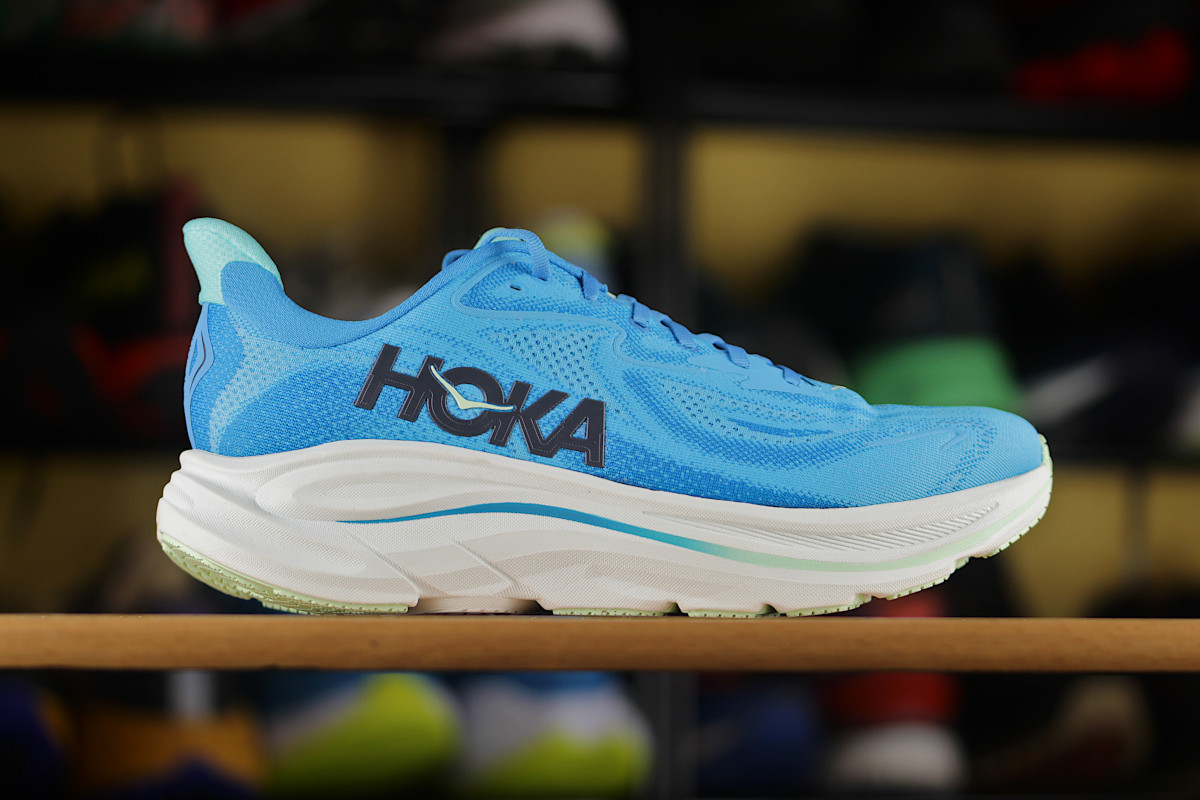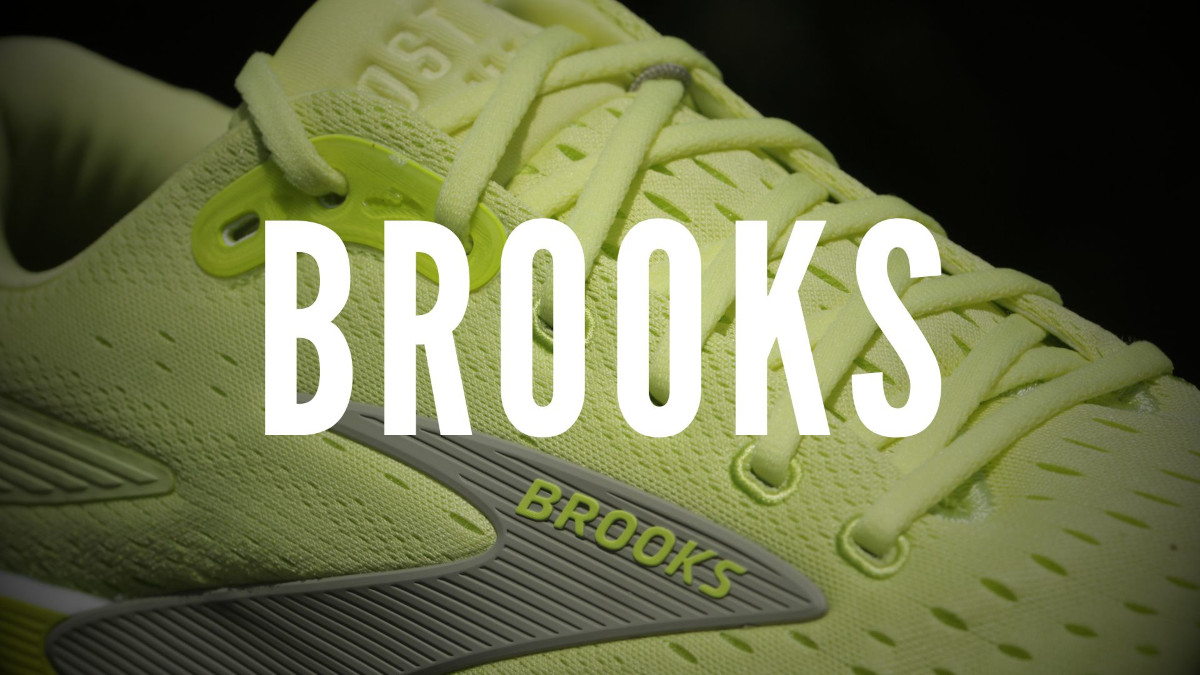The Hoka Clifton 10 is a noticeable step up from the previous version. The increased amount of foam provides even more cushioning, which is especially noticeable on longer runs. The drop has been increased to 8mm, which, combined with a more aggressive rocker in the rear of the midsole, improves roll and dynamics. The upper has also been redesigned – it is now slightly wider, allowing for more space in the metatarsus and better adaptation to different foot types. The Clifton 10 retains the series’ signature softness, but adds new accents.
Basic info
Tech specs
Purpose
The Hoka Clifton 10 is a very well-cushioned model designed for everyday running on hard surfaces. It offers a high level of comfort, especially appreciated by runners weighing up to approx. 95 kg. It performs well on hard surfaces, cobblestones and compacted gravel roads. It is best suited for easy, slower workouts where comfort and joint protection are paramount. It is a neutral shoe designed for people with a neutral foot strike.
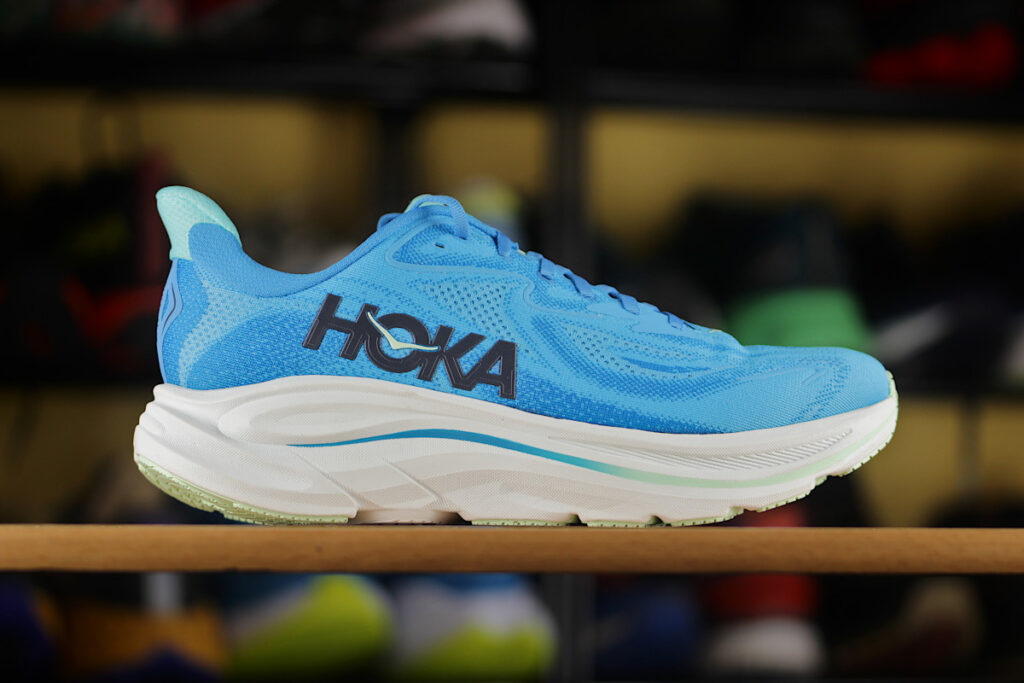
Pros
- very good cushioning
- even softer than its predecessor
- suitable for the longest distances
- a gentle rocker that helps roll from heel to toe
- very low weight (among the 9% lightest training shoes)
Cons
- slightly higher drop than in previous editions may not suit everyone (especially fans of the series)
What’s New in the Latest Edition
| HOKA CLIFTON 9 | HOKA CLIFTON 10 | |
|---|---|---|
| Stack height | 32/27mm | 42/34mm men’s 38/30mm women’s |
| Drop | 5mm | 8mm |
| Cushioning | Firmer, less foam | Softer, more foam |
| Upper | Mesh, classic lacing | Knitted mesh, double lace lock |
| Weight | 248g men’s 205g women’s | 278g men’s 227g women’s |
Hoka Running Shoes – Lineup
In terms of cushioning, the Clifton ranks between the ultra-soft Bondi, the lighter, less cushioned Rincon, and the more dynamic Skyflow. It is one of Hoka’s most popular models for running on hard surfaces – versatile, comfortable, and proven in everyday use. For many, it is their everyday training shoe.
Want to see other models? Check out our Hoka running shoe guide.
| NEUTRAL SHOES | STABILITY SHOES | |
|---|---|---|
| maximum cushioning | 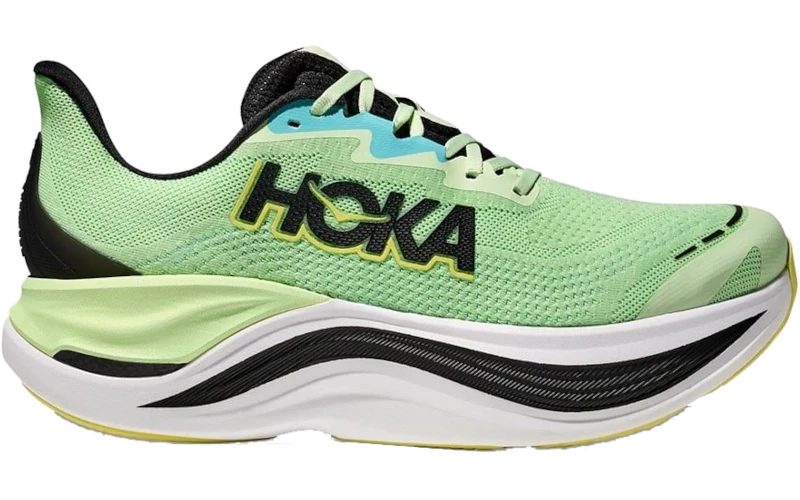 Skyward X  Bondi 9 |  Gaviota 5 |
| very high cushioning |  Clifton 10  Skyflow |  Arahi 7 |
| high cushioning |  Rincon 4 |
Similar to Hoka Clifton 10
Although each new version of the Clifton gets bigger—and the tenth has grown considerably—it is still a model designed for everyday running on hard surfaces. It is still aimed at people who prefer high comfort with every mile. Despite its extensive cushioning, the Clifton remains one of the lightest training shoes in its class. It is an interesting alternative to models such as the Asics Gel-Cumulus, Brooks Ghost and Saucony Ride.
Looking for more well-cushioned training shoes? Check out this shoe guide.
| MODEL | STACK HEIGHT (mm) | DROP (mm) | WEIGHT MEN'S (grams) | WEIGHT WOMEN'S (grams) | REGULAR PRICE (€) |
|---|---|---|---|---|---|
| adidas Supernova Rise 2 | 36/26 | 10 | 275 | 230 | 150 |
| Asics Gel-Cumulus 26 | 37/29 | 8 | 253 | 222 | 160 |
| Brooks Ghost 17 | 37/27 | 10 | 286 | 254 | 150 |
| Diadora Nucleo 2 | 38/32 | 6 | 280 | 210 | 150 |
| Hoka Clifton 10 | 42/34 | 8 | 278 | 220 | 150 |
| Mizuno Wave Rider 28 | 38/26 | 12 | 273 | 235 | 160 |
| New Balance 880 v14 | n/a | 8 | 270 | 209 | 160 |
| Nike Pegasus 41 | 37/27 | 10 | 297 | 251 | 140 |
| On Cloudsurfer 7 | 32/22 | 10 | 245 | 205 | 170 |
| Saucony Ride 18 | 35/27 | 8 | 275 | 213 | 150 |
More Foam, More Softness – Clifton Grows Up
There have been some significant changes to the midsole. Clifton 10 has grown up again – and not just symbolically. According to the producer, the new version has gained about 1cm more foam. The previous edition had 32mm under the heel and 27mm under the forefoot, while Clifton 10 now offers 42mm at the back and 34mm at the front. This is a significant increase, which translates into an even softer feel. Sounds unbelievable? The best way to feel it is to try the older and newer editions on both feet at the same time. The difference in softness is immediately noticeable – definitely in favor of the tenth edition.
It is worth noting that the women’s version of the Clifton 10 has a slightly lower midsole than the men’s. This is standard practice, resulting from differences in body structure – women are generally lighter and shorter, so they need slightly less foam under their feet. For women, the stack is 38mm under the heel and 30mm under the forefoot, which is less than in the men’s version.
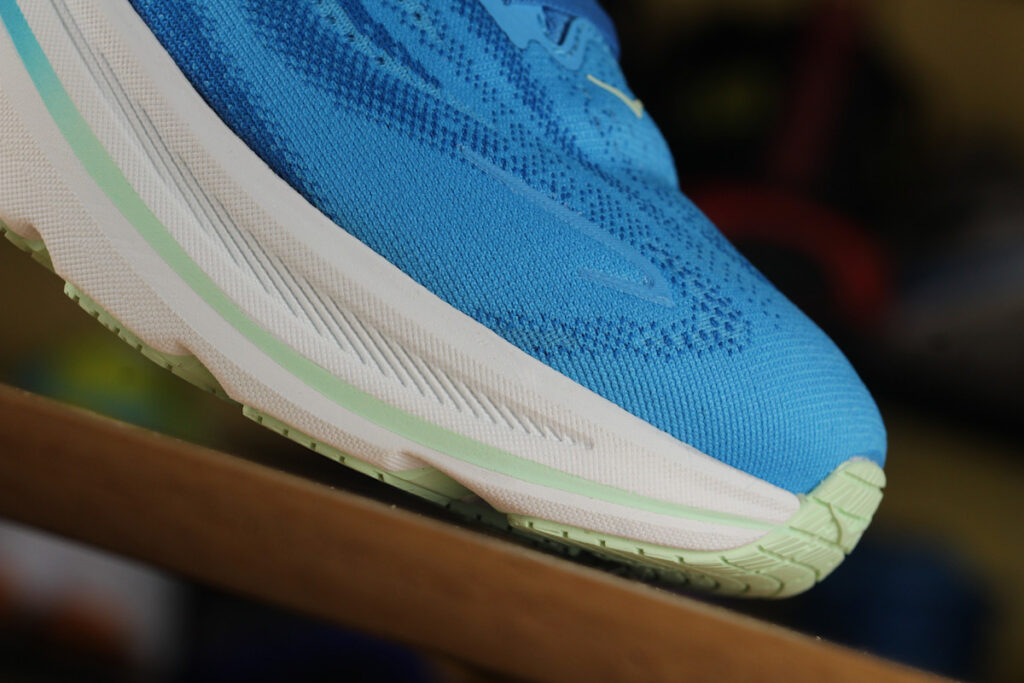
For many runners, the change in drop – from the characteristic 5mm to 8mm – may come as a surprise. For years, the lower drop (4–5mm) was one of the brand’s hallmarks, especially in models such as the Clifton. Now, the heel in the Clifton 10 is set higher, which not only changes the geometry of the shoe, but also affects how it feels – the rear part is noticeably softer. For new Hoka users, this difference will not be noticeable, but those who have been running in models with a lower drop for years may need a moment to get used to it.
There is another, less obvious change in the rear of the midsole: a stronger heel contour, i.e. a more pronounced “cut” at the rear of the shoe. This detail may escape the eye, but you can feel it when you run—the foot roll is smoother than in the Clifton 9, where it was sometimes lacking. The entire midsole now has a more pronounced rocking profile, both at the rear and at the front. This solution is designed to help save energy and improve foot movement during the rolling phase. In the 10, this effect is more noticeable than in its predecessor.
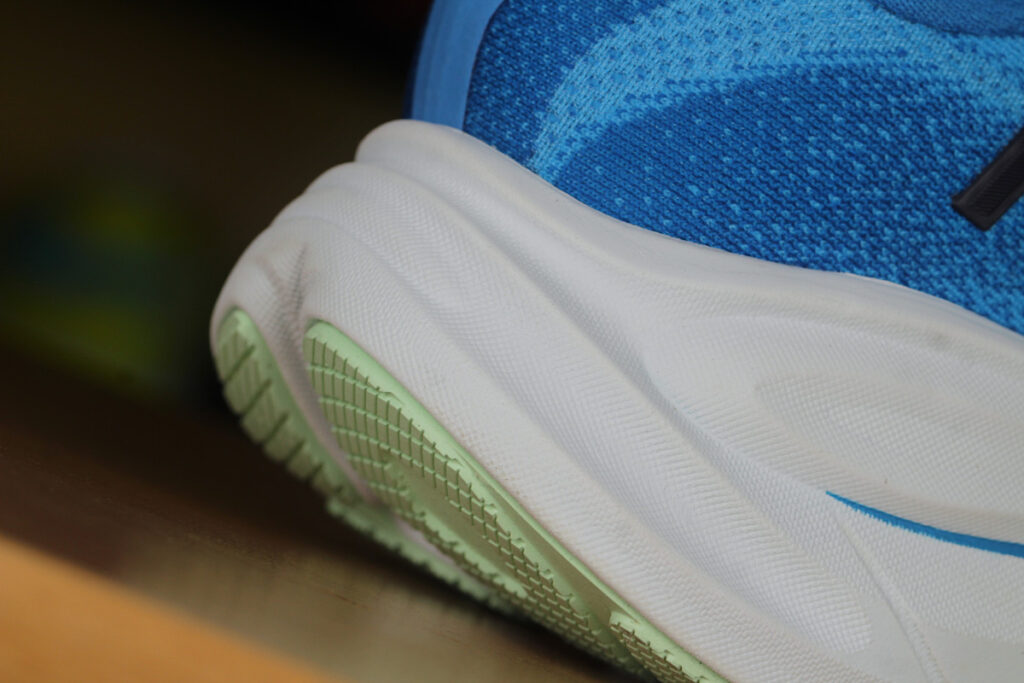
As befits Hoka, the Clifton 10 midsole is also made using FootFrame technology, which features raised edges that create a kind of “frame” around the foot. This solution allows the foot to sit deeper in the shoe, which translates into better stability and reduces unwanted side-to-side movement. This also makes the shoe look even bigger and more massive than it actually is. This is a characteristic feature of most Hoka models.
Classic and Minimalist Outsole
The Clifton 10’s outsole is a Hoka classic – not too aggressive, with a flat, recognizable pattern. The lugs are only 0.7mm high, so there are no trail ambitions here. However, thanks to additional transverse grooves, the midsole gains a little more grip, especially on less compacted surfaces. Rubber covers about half of the midsole, which is a compromise between grip and low weight. This setup works great for easy runs on hard surfaces such as asphalt, sidewalks, or paved gravel—where the Clifton feels most at home.
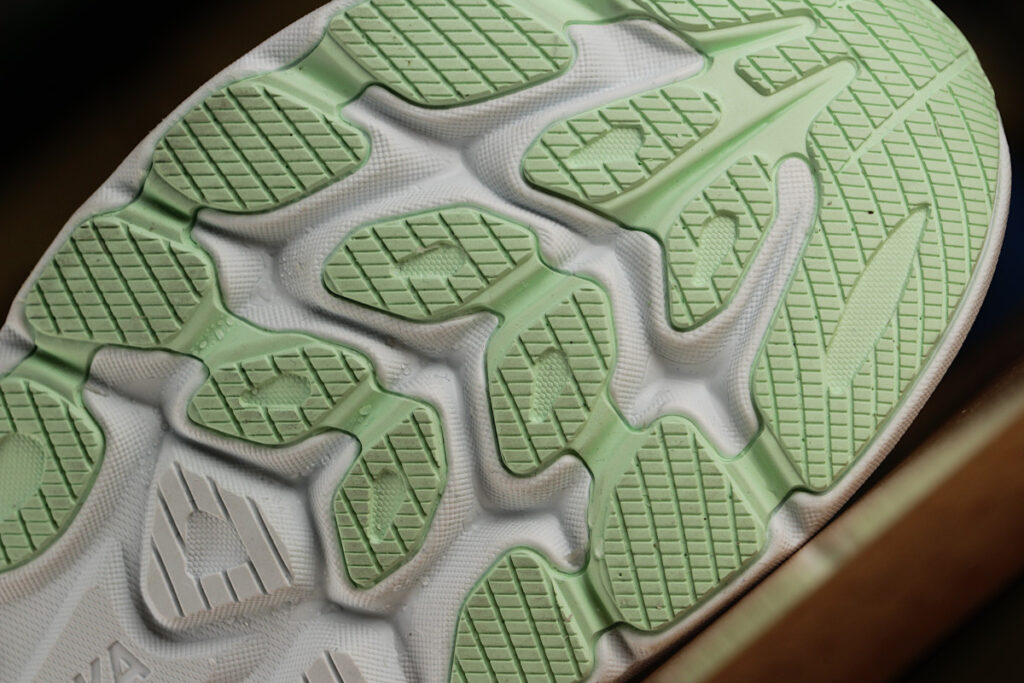
Lightweight Upper with a New Heel Counter
The upper of the Clifton 10 has undergone minor changes, but nothing revolutionary. It is made of lightweight woven mesh. This is a single-layer material that is not overly thick, which has a positive effect on weight and breathability. Ventilation is typical for this class of shoes – no fireworks, but no disappointments either. It will work well on warmer days as well as during longer training sessions in cooler weather.
In terms of interior space, the Clifton 10 offers standard room for the foot. At its widest point, the forefoot upper measures 104.4mm, which is typical for training shoes and should suit most runners with standard foot width.
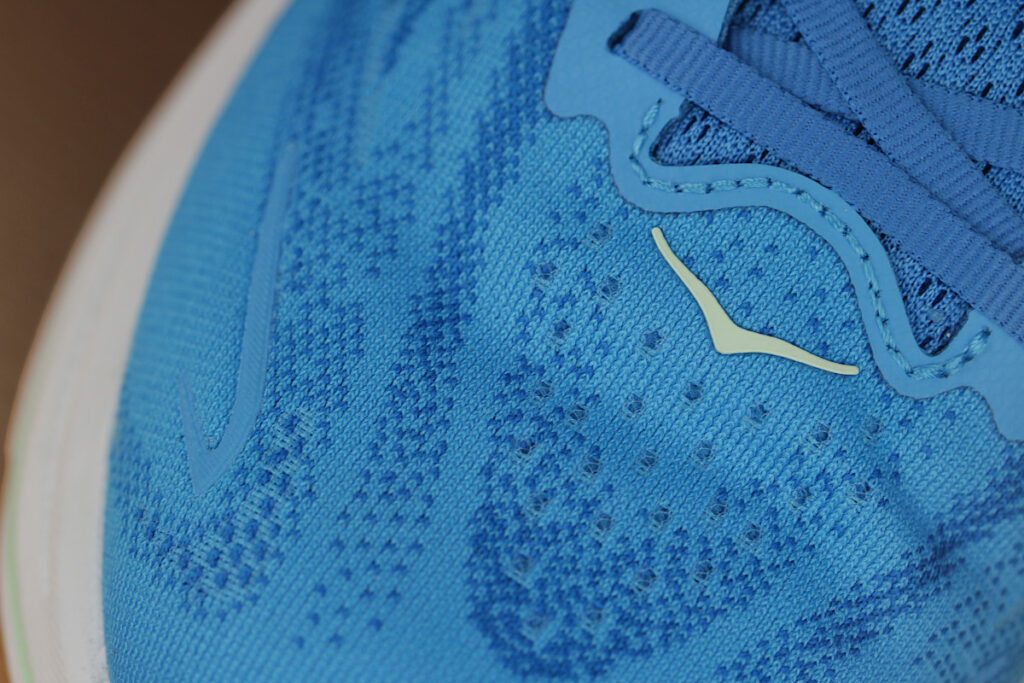
An interesting feature of the Clifton 10 is the construction of the tongue. The producer refers to a double lace lock – and indeed, instead of one standard loop on the tongue, there are two, spaced further apart. This solution helps to stabilize the tongue and prevents it from shifting sideways while running. This is important because the tongue itself is not integrated with the upper, so without additional support it could move around. Thanks to the double lock, the fit is more secure and comfortable.
Compared to its predecessor, the heel counter has been slightly modified. It is still firmly stiffened and holds the heel well, but its shape has been slightly raised, resembling the solution known from the Bondi 9 model. However, it does not feel too high. Importantly, there is still a lot of foam padding around the heel, which softly wraps the foot and ensures a high level of comfort.
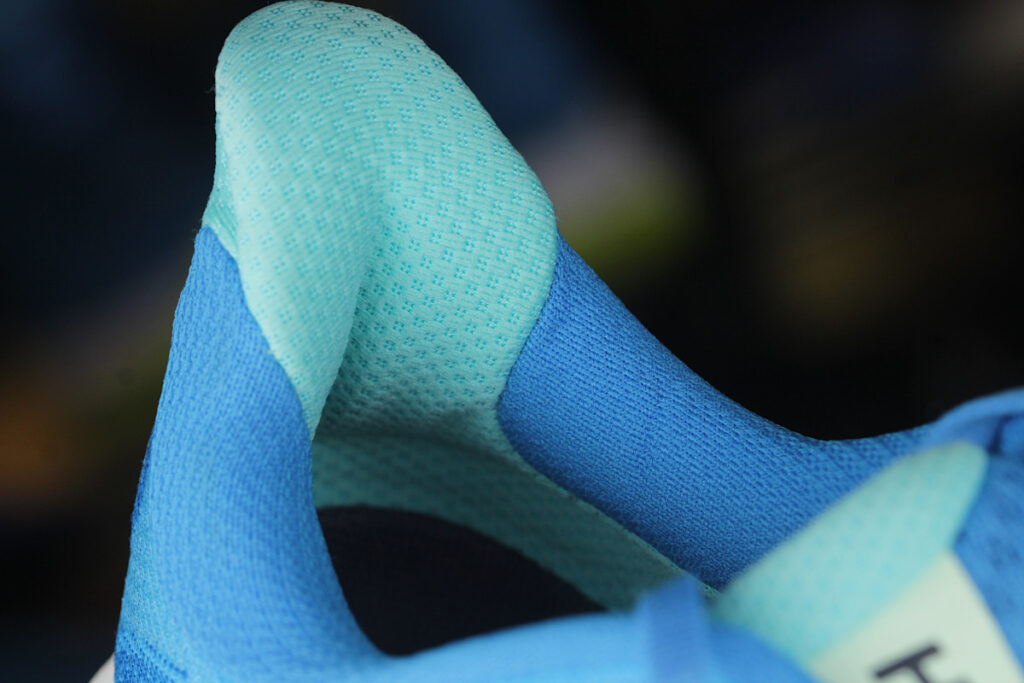
Weight – Still Lighter Than Most of the Competition
Clifton has always been considered one of the lightest training shoes, but in its tenth edition, it has gained a little weight – on average 20–30 grams. For comparison: the Clifton 9 weighed 248 g (men’s) and 205 g (women’s), while the Clifton 10 weighs 278 g (men’s) and 227 g (women’s). For such a highly cushioned model, these are still very good values.
In my size, US 12, the Clifton 10 weighs 327 g, which is not that impressive, but still well below the average for this class of shoes. In the shoe guide for all the models I tested, the Clifton 10 ranks among the 34% lightest training shoes. This is quite a good result, considering how much it offers in terms of cushioning.
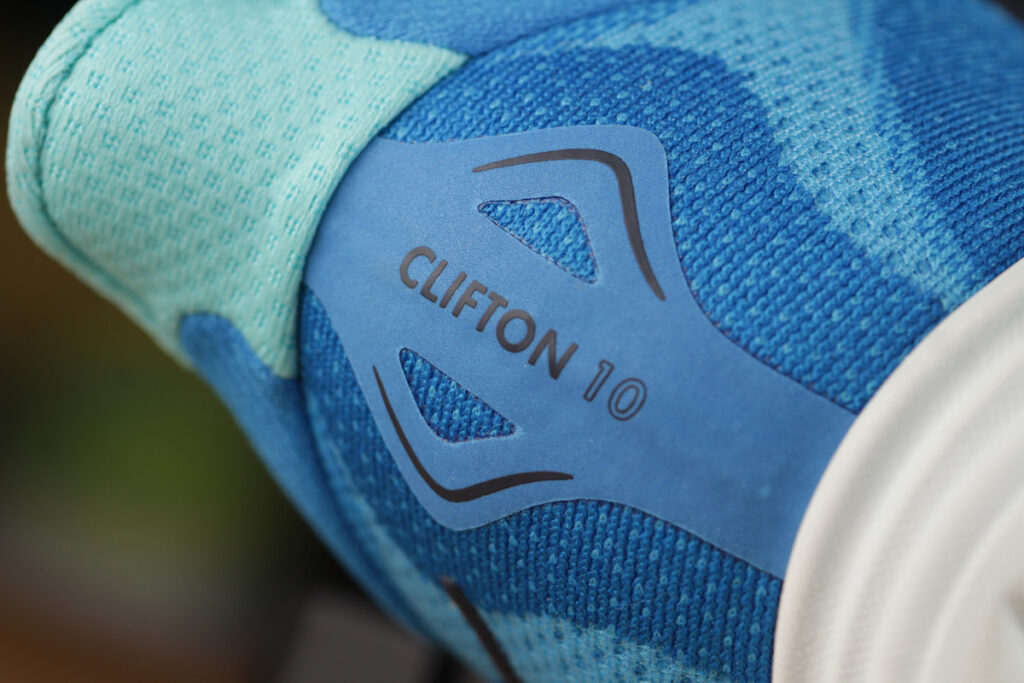
Final Thoughts
The Clifton 10 is a minor revolution of one of Hoka’s most popular models – with more foam, a higher drop, and improved rollover fluidity. It offers the same, but more! The shoe remains exceptionally comfortable, and despite the increase in weight, it is still one of the lighter training shoes. It is still a great choice for runners looking for a soft everyday shoe for hard surfaces.
